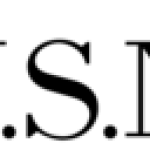- 産業: Government
- Number of terms: 11131
- Number of blossaries: 0
- Company Profile:
Classification of low-level radioactive waste (LLW) according to its radiological hazard. The classes include Class A, B, and C, with Class A being the least hazardous and accounting for 96 percent of LLW. As the waste class and hazard increase, the regulations established by the NRC require progressively greater controls to protect the health and safety of the public and the environment. For the specific regulations, see Title 10, Section 61. 55, of the Code of Federal Regulations (10 CFR 61. 55), "Waste Classification. ”
Industry:Energy
The solid form of mixed uranium oxide, which is produced from uranium ore in the uranium recovery (milling) process. The material is a mixture of uranium oxides, which can vary in proportion and color from yellow to orange to dark green (blackish) depending on the temperature at which the material is dried (which affects the level of hydration and impurities), with higher drying temperatures producing a darker and less soluble material. (The yellowcake produced by most modern mills is actually brown or black, rather than yellow, but the name comes from the color and texture of the concentrates produced by early milling operations. ) Yellowcake is commonly referred to as U<sub>3</sub>O<sub>8</sub>, because that chemical compound comprises approximately 85 percent of the yellowcake produced by uranium recovery facilities, and that product is then transported to a uranium conversion facility, where it is transformed into uranium hexafluoride (UF<sub>6</sub>), in preparation for fabricating fuel for nuclear reactors.
Industry:Energy
Penetrating electromagnetic radiation (photon) having a wavelength that is much shorter than that of visible light. These rays are usually produced by excitation of the electron field around certain nuclei. In nuclear reactions, it is customary to refer to photons originating in the nucleus as x-rays.
Industry:Energy
A sample made for the purpose of determining the presence of removable radioactive contamination on a surface. It is done by wiping, with slight pressure, a piece of soft filter paper over a representative type of surface area. It is also known as a "swipe" or "smear" sample.
Industry:Energy
Whole body exposure includes at least the external exposure, head, trunk, arms above the elbow, or legs above the knee. Where a radioisotope is uniformly distributed throughout the body tissues, rather than being concentrated in certain parts, the irradiation can be considered as whole-body exposure.
Industry:Energy
A device used to identify and measure the radioactive material in the body of human beings and animals. It uses heavy shielding to keep out naturally existing background radiation and ultrasensitive radiation detectors and electronic counting equipment.
Industry:Energy
The movement of electricity from one system to another over transmission facilities of intervening systems. Wheeling service contracts can be established between two or more systems.
Industry:Energy
Multipliers of the equivalent dose to an organ or tissue used for radiation protection purposes to account for different sensitivities of different organs and tissues to the induction of stochastic effects of radiation (see 10 CFR 20. 1003 for complete information).
Industry:Energy
All operations involving the lowering and raising of measuring devices or tools that contain licensed nuclear material or are used to detect licensed nuclear materials in wells for the purpose of obtaining information about the well or adjacent formations that may be used in oil, gas, mineral, groundwater, or geological exploration.
Industry:Energy
A unit of power (in the international system of units) defined as the consumption or conversion of one joule of energy per second. In electricity, a watt is equal to current (in amperes) multiplied by voltage (in volts).
Industry:Energy
